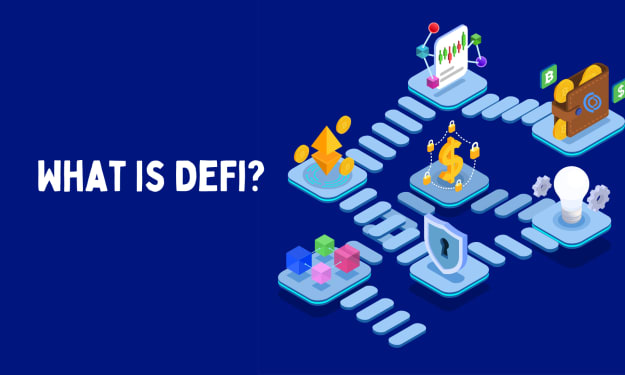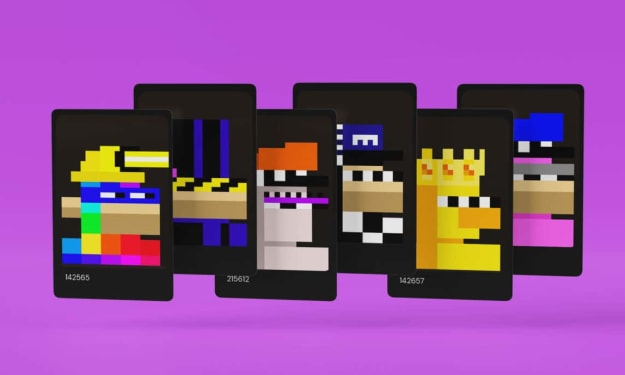The Journey to Create a Secure and Scalable NFT Marketplace Using Cardano Blockchain
How to Leverage the Features of Cardano Blockchain to Set Up a Secure NFT Marketplace?

Cardano is a third-generation blockchain platform that aims to provide a more secure and sustainable ecosystem for decentralized applications and transactions. With its unique features such as the Proof of Stake (PoS) consensus algorithm, Cardano is becoming increasingly popular among developers and businesses looking to build blockchain-based solutions.
One such solution is the development of a Non-Fungible Token (NFT) marketplace on the Cardano blockchain. NFTs are unique digital assets that can represent a wide range of things such as artwork, music, videos, and other collectibles. NFTs are becoming increasingly popular as a new way to own and trade digital assets.
Building an NFT marketplace on Cardano has several advantages over other blockchain platforms. Cardano's PoS consensus algorithm makes it more energy-efficient and eco-friendly than Proof of Work (PoW) blockchains like Bitcoin and Ethereum. Additionally, Cardano's modular architecture and support for smart contracts make it easier for developers to build and deploy decentralized applications.
Furthermore, Cardano's focus on interoperability allows for seamless integration with other blockchains and protocols, enabling developers to create innovative solutions that can leverage the strengths of multiple blockchain platforms.
In summary, the development of an NFT marketplace on Cardano has the potential to provide a more sustainable and efficient ecosystem for NFTs, while also offering developers the flexibility and interoperability needed to create innovative decentralized applications.
What Exactly Is Cardano Blockchain?
Cardano is a third-generation blockchain platform that was created by Input Output Hong Kong (IOHK), a blockchain research and development company founded by Charles Hoskinson and Jeremy Wood. Cardano was developed as a decentralized platform for building and executing smart contracts and decentralized applications (DApps).
Cardano is unique in its approach to blockchain technology, as it was designed from the ground up to address the scalability, security, and sustainability issues that have plagued previous blockchain platforms. One of the key features of Cardano is its use of a Proof of Stake (PoS) consensus algorithm, which allows for more energy-efficient and eco-friendly mining compared to Proof of Work (PoW) blockchains like Bitcoin and Ethereum.
Cardano is also built using a layered architecture, which allows for greater flexibility and modularity in the development of smart contracts and DApps. The platform's first layer, known as the Cardano Settlement Layer (CSL), handles transactions and operates the ADA cryptocurrency, while the second layer, known as the Cardano Computation Layer (CCL), is used for executing smart contracts.
Cardano also incorporates a peer-review process for the development of its code, which aims to improve the quality and security of the platform. Additionally, Cardano has a treasury system, which allows the community to propose and vote on projects to be funded through the platform's native cryptocurrency, ADA.
Overall, Cardano is a blockchain platform that was designed to be scalable, secure, and sustainable, with a focus on providing an efficient and user-friendly environment for the development and execution of smart contracts and DApps.
Cardano Blockchain NFT Marketplace Development - A Step-by-step Process
Developing an NFT marketplace on the Cardano blockchain involves several steps. Here's a high-level overview of the process:
- Determine the Scope of the Marketplace: The first step is to define the scope of the NFT marketplace. This includes identifying the types of NFTs that will be supported, the target audience, and any unique features that will be included.
- Choose the Development Framework: Next, choose a development framework for the marketplace. Cardano supports several programming languages, including Haskell and Plutus, which can be used to create smart contracts for the marketplace.
- Set Up the Development Environment: Set up the development environment, including a Cardano node, a local development environment, and any necessary tools or libraries.
- Design the Smart Contracts: Design the smart contracts that will power the NFT marketplace. This includes defining the logic of the contracts, the data structures that will be used, and any necessary interfaces.
- Develop the User Interface: Develop the user interface for the marketplace. This includes designing the layout, implementing any necessary functionality, and integrating with the smart contracts.
- Test the Marketplace: Test the marketplace thoroughly to ensure that it functions correctly and is secure. This includes testing the smart contracts, the user interface, and any backend systems.
- Launch the Marketplace: Once testing is complete, launch the marketplace. This includes deploying the smart contracts to the Cardano blockchain, configuring any necessary servers or hosting, and making the marketplace available to users.
- Maintain and Update the Marketplace: Finally, maintain and update the NFT marketplace over time to ensure that it remains secure and up-to-date with the latest features and functionality. This may include fixing bugs, adding new features, and integrating with other blockchain platforms or protocols.
Overall, developing an NFT marketplace on the Cardano blockchain requires careful planning, design, and testing, as well as ongoing maintenance and updates to ensure that the marketplace remains secure and functional over time.
Features of Creating an NFT Platform on Cardano Blockchain
Here are some of the key features of creating an NFT platform on the Cardano blockchain:
- Smart Contract Support: Cardano's smart contract functionality allows for the creation of more complex and sophisticated NFTs, which can enable more advanced features such as royalties, split ownership, and more.
- Low Transaction Fees: Cardano's transaction fees are much lower compared to other blockchain platforms, which makes it more cost-effective to create and trade NFTs.
- High Security: Cardano is designed with a focus on security, using advanced cryptography and formal verification techniques to ensure the integrity of the blockchain and the NFTs created on it.
- Interoperability: Cardano's support for interoperability allows for easy integration with other blockchain platforms and protocols, making it easier to create NFTs that can be used across multiple ecosystems.
- Scalability: Cardano's layered architecture allows for greater scalability, which means that an NFT platform built on Cardano can handle a larger number of transactions and users compared to other blockchain platforms.
- Sustainability: Cardano uses a Proof of Stake (PoS) consensus algorithm, which is more energy-efficient and eco-friendly than Proof of Work (PoW) blockchains like Bitcoin and Ethereum. This makes Cardano a more sustainable option for building an NFT platform.
- Governance: Cardano has a governance system that allows for community participation in decision-making and project funding. This can be used to incentivize developers to create and maintain NFT projects on the Cardano blockchain.
Overall, creating an NFT platform on the Cardano blockchain offers several benefits, including smart contract support, low transaction fees, high security, interoperability, scalability, sustainability, and governance. These features can help developers create a more efficient, versatile, and secure NFT platform that can better serve the needs of users and businesses.
Benefits of Creating an NFT Platform on Cardano
There are several benefits to creating an NFT platform on Cardano. Here are some of the key advantages:
- Scalability: Cardano's layered architecture allows for greater scalability, which means that an NFT platform built on Cardano can handle a larger number of transactions and users compared to other blockchain platforms.
- Sustainability: Cardano uses a Proof of Stake (PoS) consensus algorithm, which is more energy-efficient and eco-friendly than Proof of Work (PoW) blockchains like Bitcoin and Ethereum. This makes Cardano a more sustainable option for building an NFT platform.
- Interoperability: Cardano's focus on interoperability allows for seamless integration with other blockchain platforms and protocols. This means that an NFT platform built on Cardano can leverage the strengths of multiple blockchain ecosystems, making it more versatile and adaptable.
- Security: Cardano's focus on peer-reviewed code and formal verification techniques ensures that the platform is highly secure and less susceptible to hacking or other forms of attacks. This is especially important for an NFT platform, where security is critical to ensuring the authenticity and ownership of digital assets.
- Smart Contract Support: Cardano supports smart contracts, which can be used to create more complex NFTs and enable more sophisticated functionality in the NFT platform. This allows for greater flexibility in the types of NFTs that can be created and traded on the platform.
Overall, building an NFT platform on Cardano offers several advantages over other blockchain platforms, including greater scalability, sustainability, interoperability, security, and support for smart contracts. These advantages can help developers create a more efficient, versatile, and secure NFT platform that can better serve the needs of users and businesses.
Conclusion
In conclusion, the Cardano blockchain offers a range of benefits for developers looking to create an NFT marketplace. These benefits include high security, scalability, interoperability, sustainability, and smart contract support, among others. By leveraging these features, developers can create a more efficient, versatile, and secure NFT platform that can better serve the needs of users and businesses. As the NFT market continues to grow, building an NFT platform on Cardano can help developers stay ahead of the curve and position their projects for long-term success.
About the Creator
Angelika Candie
Blockchain Analyst & Technical Content Writer






Comments
There are no comments for this story
Be the first to respond and start the conversation.